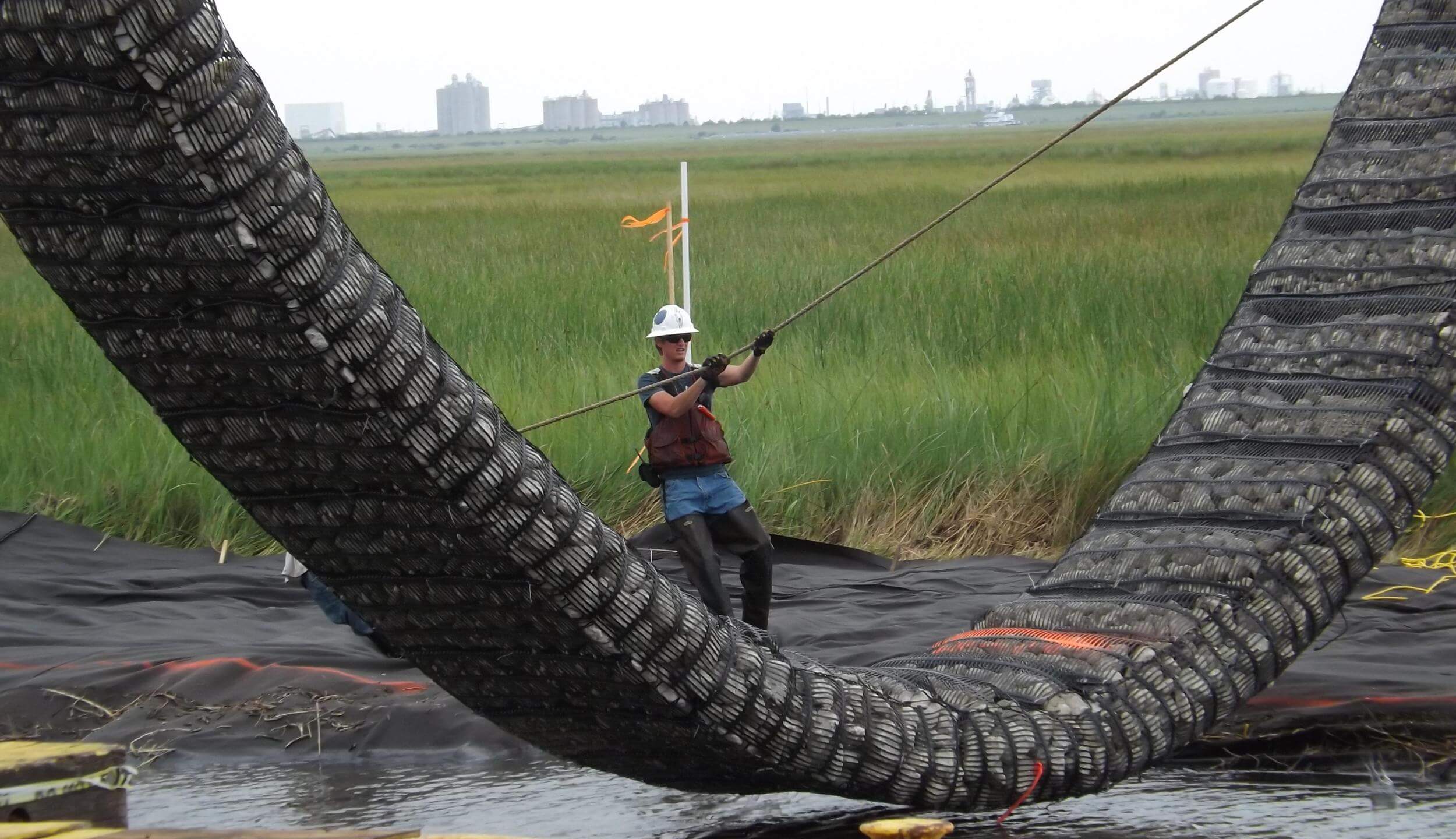Geotubes
The construction of coastal protection structures, dams, breakwaters, and landscaping often involves the use of sand, which is one of the cheapest building materials and can be delivered to construction sites in large quantities.
Sand is a mechanically stabilized material and has volumetric stability, but in the aquatic environment it is very easily eroded, has low cohesion and is prone to erosion under the influence of water flows and waves; when placed underwater, sand tends to migrate even at gentle slopes.
For the construction of structures made of sand in water, it is very important to guarantee the required angle of internal friction, otherwise the structure will not be stable under the action of a wave. Encapsulated sand (taken in a shell) allows solving a wide range of technical issues. It is possible to effectively combine structures made of encapsulated sand and stone mats. As such encapsulated shells, geotubes, geocontainers, geobags with the use of high-strength geotextile products can be used.
Geotubes consist of a special geotextile filled with sand. The diameter of the tube can vary from 0.5 m to 6.0 m; the length can vary from 25 m to 100 m and above, depending on the design and purpose of the structure. Standard geotextile tubes are made of a fabric geotextile composite of polypropylene or polyester. Fabric geotextiles easily retain sand and have a high tensile strength.


